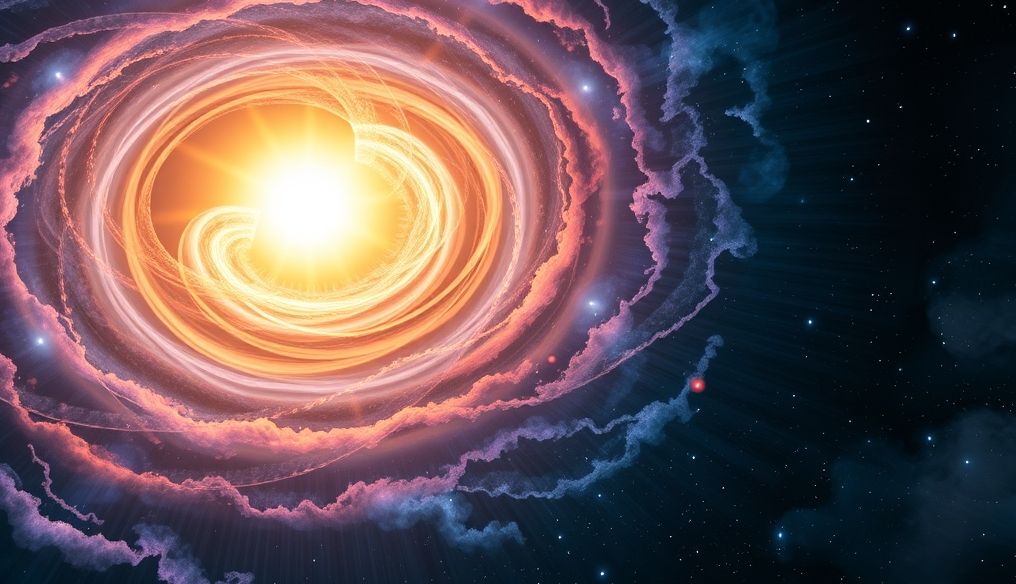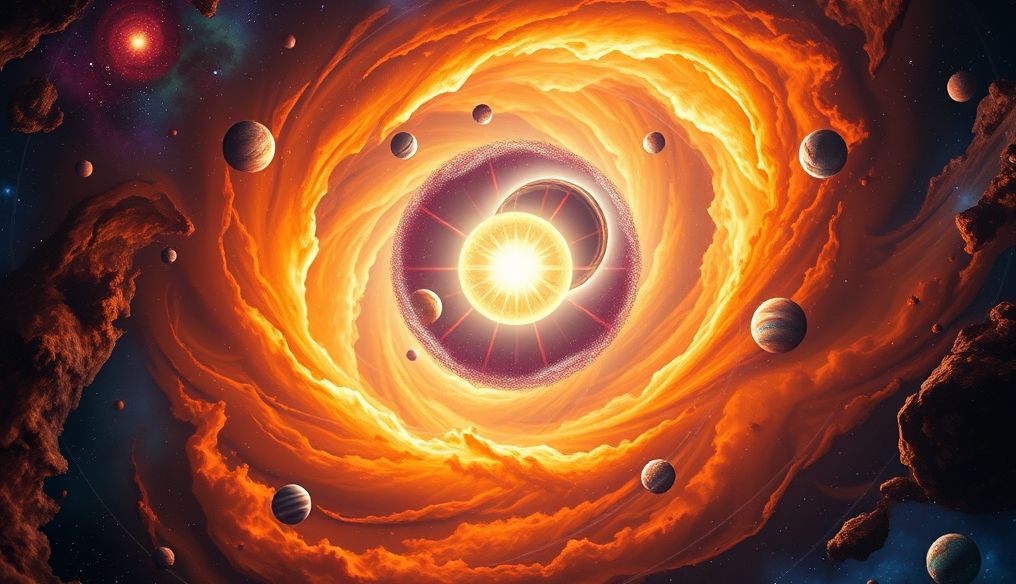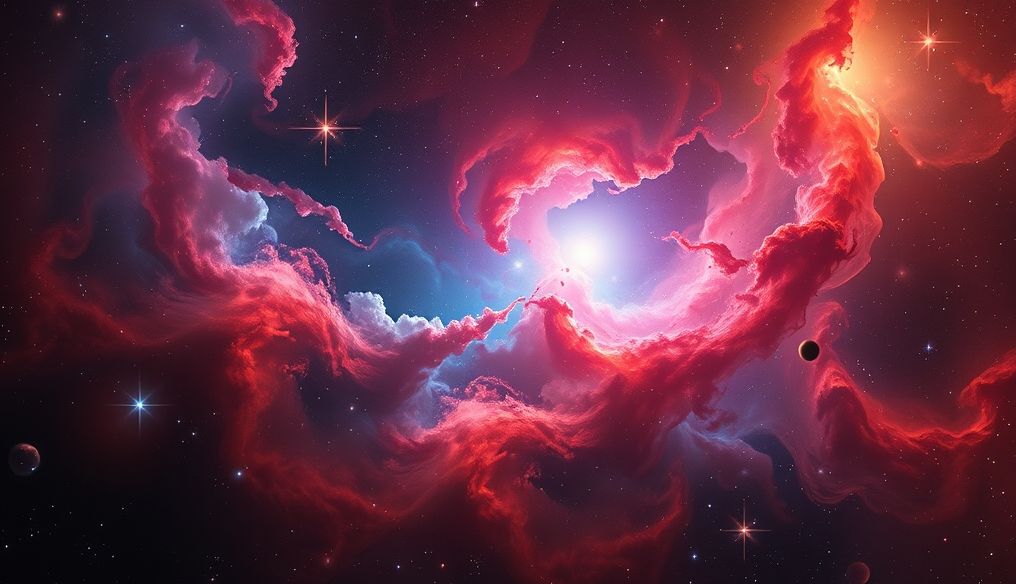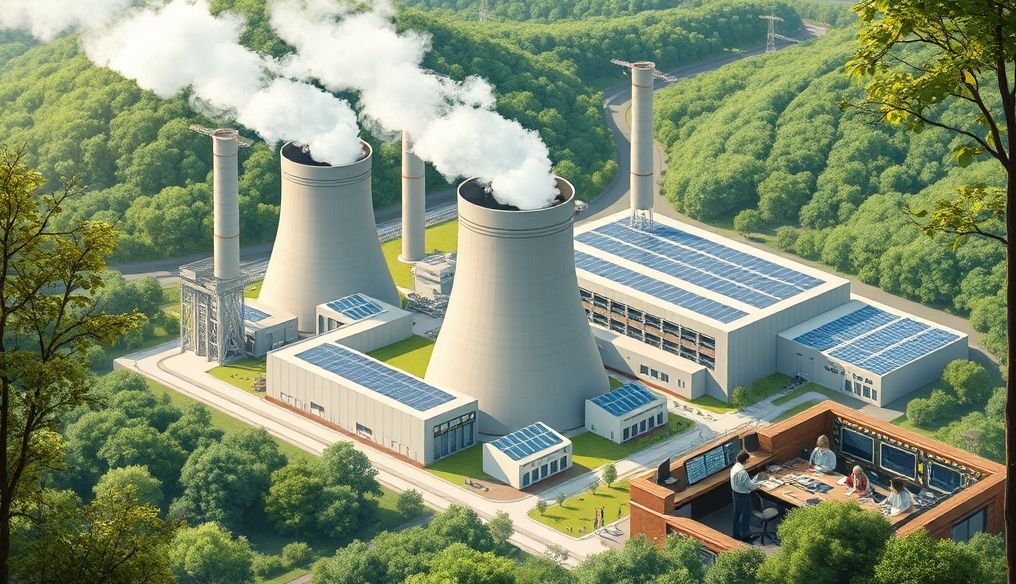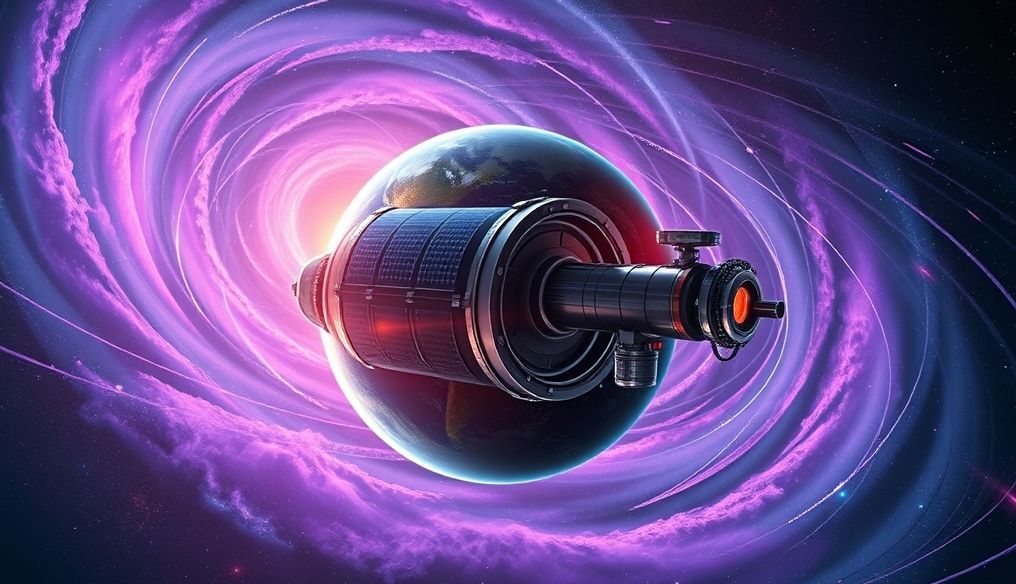How are Planets and Stars Formed from Cosmic Dust?
The formation of stars and planets is an amazing cosmic journey that begins with vast clouds of gas and dust, evolving over millions of years to form the celestial bodies we see in the sky. This process is complex and influenced by many physical factors, but it can be summarized in several main stages.
1. Giant Molecular Clouds
The story begins in giant molecular clouds, vast regions in space composed mainly of molecular hydrogen (H2), along with small amounts of helium and other molecules, and cosmic dust. These clouds are very cold (around 10-20 Kelvin) and relatively dense, making them an ideal environment for star formation.
- Size: These clouds can span tens or even hundreds of light-years.
- Mass: They contain a mass equivalent to thousands or even millions of times the mass of the Sun.
- Composition: Composed of molecular hydrogen, helium, and other molecules such as water, ammonia, and methane, as well as cosmic dust.
2. Gravitational Collapse
Under certain conditions, regions within the molecular cloud can begin to collapse under their own gravity. This collapse can be triggered by disturbances within the cloud, such as shock waves from nearby supernova explosions, or by the cloud passing through a region of higher density in space.
As a region begins to collapse, its density gradually increases, which increases its gravitational force. This leads to an acceleration of the collapse, as the region attracts more of the surrounding material.
Example: Imagine a ball of clay. If you squeeze it from all sides, it will shrink and become denser. This is what happens to a molecular cloud under the influence of gravity.
3. Protostar Formation
As the collapse continues, a dense and hot region forms in the center of the collapsing cloud. This region is called a protostar. The protostar is not yet a true star, as it is still unable to generate energy through nuclear fusion.
The protostar continues to grow by accumulating material from the surrounding cloud. A disk of gas and dust forms around the protostar, known as the protoplanetary disk. This disk is where planets will later form.
Note: About 50% of the cloud's mass goes into forming the protostar, and the rest forms the protoplanetary disk.
4. Nuclear Fusion
When the protostar becomes dense and hot enough, nuclear fusion begins in its core. In this process, hydrogen atoms fuse to form helium atoms, releasing a tremendous amount of energy. This energy stops the gravitational collapse and stabilizes the star.
When nuclear fusion begins, the protostar becomes a true star and begins to radiate light and heat. The color and temperature of the star depend on its mass. Massive stars are hotter and bluer, while small stars are cooler and redder.
5. Planet Formation
Planets form in the protoplanetary disk surrounding the protostar. The disk consists of gas and dust remaining from the star formation process.
- Accretion: Small dust particles in the disk begin to collide and stick together, forming larger bodies called planetesimals.
- Planetesimals: Planetesimals continue to grow by colliding and merging with each other, forming protoplanets.
- Planets: Protoplanets continue to grow by attracting more material from the surrounding disk, forming full-fledged planets.
Types of Planets:
- Rocky Planets: Form near the star, where the temperature is high enough to evaporate ice and other volatile materials. They are made of rock and metal.
- Gas Giants: Form far from the star, where the temperature is low enough to freeze ice and other volatile materials. They are made of gases such as hydrogen and helium, as well as small amounts of rock and metal.
6. Protoplanetary Disk Clearing
Over time, the protoplanetary disk is cleared of the remaining gas and dust. This clearing can happen in several ways:
- Stellar Radiation: The strong radiation from the star can push gas and dust away from the solar system.
- Stellar Winds: Stellar winds, a continuous flow of charged particles from the star, can carry gas and dust away from the solar system.
- Planetary Gravity: Planets can attract gas and dust to their surfaces, clearing the surrounding area.
7. Stable Solar System
After the protoplanetary disk is cleared, the solar system becomes stable. The planets orbit the star in fixed orbits and interact with each other through gravity.
Example: Our solar system is an example of a stable solar system. The eight planets orbit the Sun in defined orbits and maintain their relative order over billions of years.
8. Factors Influencing Star and Planet Formation
The process of star and planet formation is influenced by many factors, including:
- Mass of the Molecular Cloud: The mass of the molecular cloud determines the number of stars and planets that can form.
- Composition of the Molecular Cloud: The composition of the molecular cloud affects the types of planets that can form.
- Presence of Disturbances: Disturbances in the molecular cloud can accelerate the process of star and planet formation.
- Proximity of Supernovae: Nearby supernovae can affect the process of star and planet formation by compressing the molecular cloud.
9. Recent Discoveries in Astronomy
Recent discoveries in astronomy have led to a better understanding of the process of star and planet formation. For example, scientists have discovered many exoplanets (planets orbiting stars other than the Sun) using space telescopes such as the Kepler Space Telescope and the James Webb Space Telescope.
James Webb Space Telescope: Provides detailed images of molecular clouds and protoplanetary disks, allowing scientists to study the process of star and planet formation in greater detail.
10. Future of Star and Planet Formation Research
There is still much to learn about the process of star and planet formation. Scientists plan to launch more space telescopes and ground-based observatories in the future, which will help them study this process in greater detail.
Open Questions:
- How do rocky and gas planets form?
- Is there life on other planets?
- How do solar systems evolve over time?
Answering these questions will help us better understand our place in the universe, and the potential for life elsewhere.
Conclusion: The formation of stars and planets is a complex and amazing process that takes millions of years and is influenced by many physical factors. By studying this process, we can better understand how the universe originated and how life evolved.
